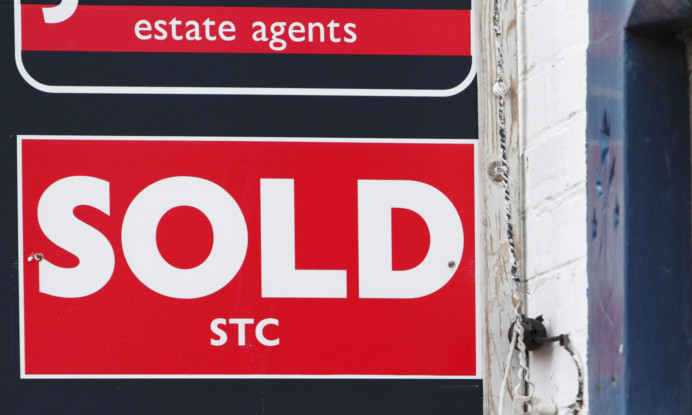House prices surged at their fastest annual rate in over three years in October, according to Nationwide, as concerns over the risk of another period of boom and bust mounted.
Prices lifted by 5.8% year-on-year to reach £173,678 on average, showing the strongest increase seen since July 2010, the building society said.
On a monthly basis, prices rose by 1%, which is the biggest upswing seen since July this year and marks the sixth month in a row of price increases.
A flood of reports have pointed to housing market activity hotting up in recent months although there are large regional variations.
The South East of England is seeing the largest increase in prices, whereas Scotland’s market remains much more subdued.
The launch of a new phase of the Government’s flagship Help to Buy scheme offering state-backed mortgages to people with deposits as low as 5% was brought forward to this month, following expectations that the initiative would not start until January 2014.
State-backed lenders Royal Bank of Scotland (RBS), NatWest, Halifax and Bank of Scotland have all started offering mortgages under the scheme and other major providers including HSBC, Santander and Barclays have also confirmed plans to start offering products under the initiative at a later date.
Critics of the scheme argue that rather than launching initiatives to unleash more aspiring buyers into the market which will contribute to the upward pressure on house prices, the Government should instead be concentrating efforts on trying to address a lack of housing supply by building more homes.
Robert Gardner, chief economist at Nationwide, said: “House price growth has accelerated as buyer demand has picked up more quickly than the supply of new homes.
“The risk is that if demand continues to strengthen while the supply of property remains constrained, affordability could become stretched.
“Indeed, average wages have continued to decline in real terms even though employment growth has been fairly robust in recent years.”
Mr Gardner said that despite the existence of other schemes to help mortgage borrowers, such as Funding for Lending which was launched last year and gives lenders access to cheap finance, it is only in more recent months that consumer confidence in the economy has “improved markedly”, increasing the willingness of would-be buyers to step into the market.
Despite the recent price increases, Nationwide said that house prices remain around 7% below their peak at the height of the property boom in 2007.
Ultra-low interest rates as the Bank of England base rate remains at a historic 0.5% low are also helping to keep people’s mortgage payments affordable for now.
Nationwide said that the typical mortgage payment for a first-time buyer currently equates to just under one third (29%) of their take-home pay, which is in line with the long-term average.
Last month, Nationwide’s most recent quarterly breakdown showed how the selling price of the average Scottish home rose by 1.5% during the three-month period to the end of September.
The quickening in price growth was most pronounced in Aberdeenshire and Moray with the market weakest in Southern Scotland. Over the year to September, prices rose by 2.2%.
The lender last week announced plans to remove the Dunfermline Building Society name from Scotland’s high streets by integrating and closing duplicate branches.
